Ruggedness and Reliability Starts at the Contact
In critical mil/aero applications, a connector’s dependability begins where the pins and sockets meet: the contact system.
By Robert Kleinschmidt, Senior Vice President, Air & Defense Business Unit, AirBorn, Inc.
Many electronic systems in the military, defense, and aeronautics industries are designed to excel in some of the harshest environments imaginable. Deep-sea systems must endure high-pressure and corrosive salt water, while systems on land may have to endure battlefield conditions including dirt, dust, high-vibration, and high heat. The same is true for aerospace systems, which have to withstand repeated takeoffs and landings, constant in-flight vibration, and the unrelenting temperature fluctuations that spacecraft sustain while exploring the vastness of space. The idea of designing truly extreme rugged and reliable electronic components has been relentlessly pursued by engineers and manufacturers alike for decades.
Rugged and reliable is a common phrase used in countless marketing materials within the electronic component industry, and is frequently applied to connectors, which serve as core components in many electronic systems. Since no easily referenced grading system exists to distinguish connectors that are truly rugged and reliable from commercial-grade connectors that only claim to be, engineers must investigate the data behind the marketing hype to determine a connector’s true nature. After all, the definition of rugged and reliable depends chiefly on the context of a product’s final application and the severity of its usage.
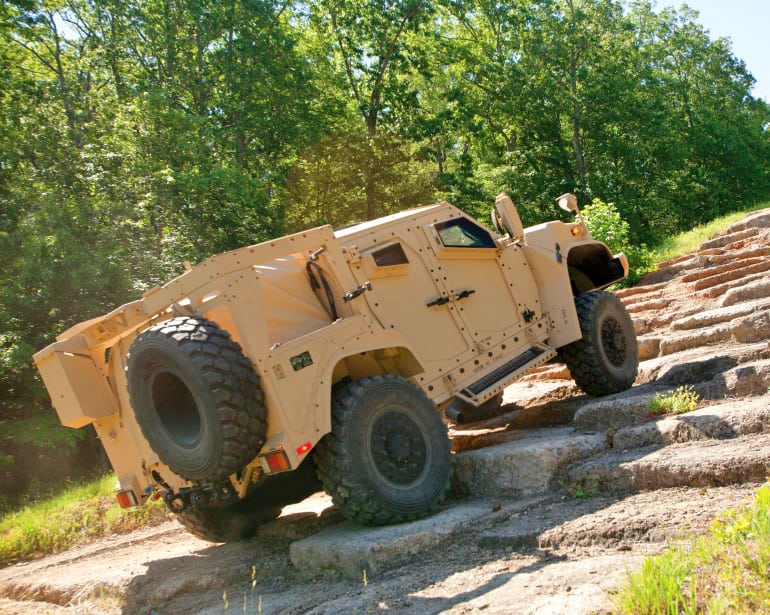
Figure 1: A connector’s contact is much like the transmission in this joint light tactical vehicle (JLTV) in that both are critically responsible for overall performance.
Connector features such as mating cycles, mounting and mating hardware, shielding, backshells, insulator materials, and latching mechanisms are all important factors for achieving rugged and reliable performance. But much like the transmission in Oshkosh Defense’s Joint Light Tactical Vehicle (JLTV), a connector’s dependability begins where the pins and sockets meet: the contact system.
Contact systems are especially critical in modern microminiature military connectors, as it can prove extremely challenging to replicate and implement the same ruggedness and reliability characteristics employed in larger connectors at microscopic levels. The three contact types typically employed in high-end, rugged and reliable connectors are pin-and-socket contacts, twist-pin contacts, and hyperboloid contacts.
Pin-and-socket contacts are cylindrical contacts with either a pin or socket that relies on a spring to force the mating element into a positive contact position. These springs also wipe the mating surfaces and maintain contact pressure.
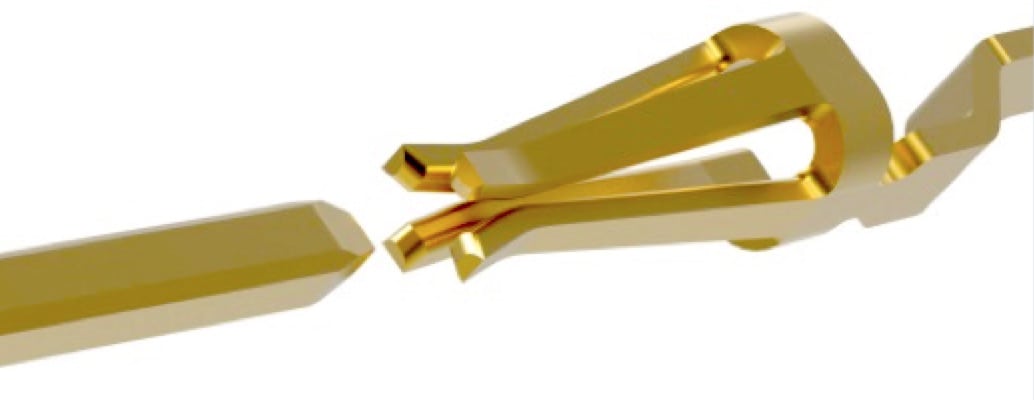
Figure 2: A pin-and-socket contact
Twist-pin contacts are made from a bundle of spring cable arc welded at the end, crimped to a sleeve, and bulged out to create a spring element.
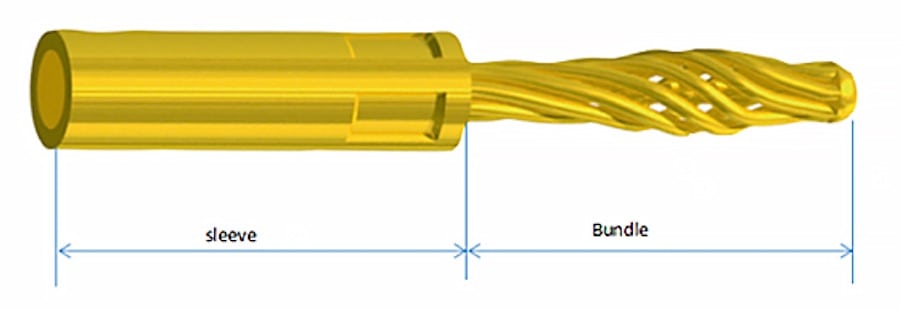
Figure 3: A twist-pin contact
Hyperboloid contacts are essentially the reverse approach to a twist-pin contact, as they have a similar spring element/mesh, but on the socket side of the contact rather than the pin side.
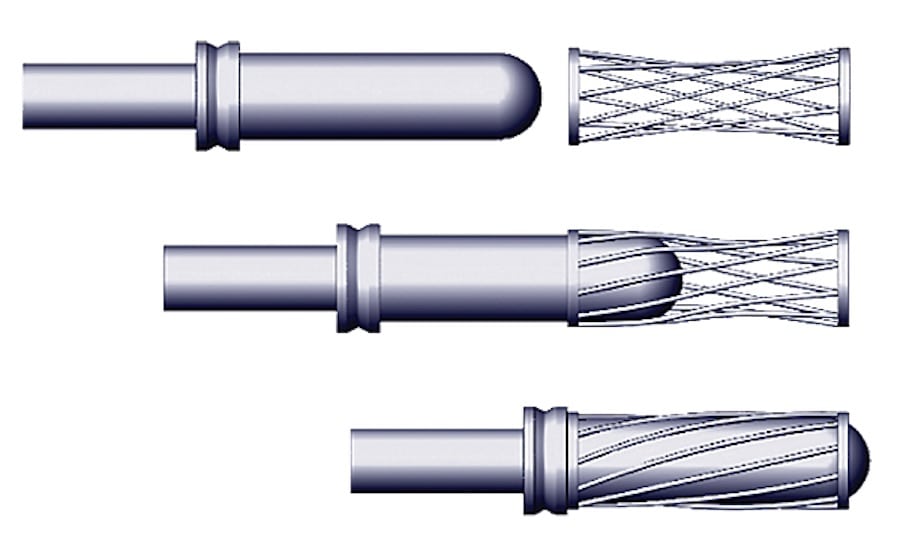
Figure 4: Hyperboloid contacts
The common theme among these three contact technologies is that each achieves multiple points of contact. If the engineering community at large had to agree upon a single attribute that best differentiates truly rugged and reliable connectors from commercial-grade connectors, it would almost certainly be multiple points of contact. Although there are definitely other important distinguishing factors, having a singular point of contact, or even only two points of contact, creates the potential for intermittent and inconsistent pin and socket contact under high-vibration or high g-force scenarios, and one brief moment of unmating at the contact level can sometimes have devastating effects.
Several other attributes also contribute to a connector’s ruggedness and reliability; the first of which is contact engagement. Contact engagement is the length of the contact area established between a pin and socket. A general rule of thumb for rugged and reliable performance is a minimum contact engagement of 1.5 times the diameter of the pin.

Figure 5: Contact engagement (left) and contact normal force (right)
Another key attribute is contact normal force. When a connector’s pin or socket is acting as a spring member, the amount of force that each tine of the spring contact applies to the mating contact is critical to maintaining continuous contact in high-vibration environments. The contact normal force must be sufficiently maintained over the life of the connector, so it is critical to employ a robust base material for the spring member of rugged, high-reliability contacts. Greater contact force offers the added benefit of minimizing air gaps between the two mating faces, which results in reduced electrical resistance. Contact geometry plays an important role in maintaining good contact force as well. Two flat surfaces that butt up against each other distribute forces evenly across the surface, which reduces the contact force, while a rounded surface that makes contact with a flat surface concentrates the contact force into a smaller area and results in a higher contact normal force. Optimizing contact geometry to achieve optimal contact normal force is an astounding feat of engineering given the microminiature size of contact systems today.
Contact base materials play a central role in achieving proper contact normal force through spring performance as well, and are also significant in terms of electrical and thermal conductivity, ease of fabrication, and material costs. Beryllium copper (BeCu) is the base material of choice for spring member contacts in ultra-high-reliability connectors due to its unique combination of characteristics, including high yield strength and high hardness, formability, spring stability, and phenomenal fatigue resistance, which is a critical facet of high-endurance components, and especially those under cyclic loads. Phosphor bronze or brass is often the material of choice for non-spring contact members, such as pins, and contact plating — the metal used to coat the base material at the mating face — is classically gold due to its high corrosion resistance, which helps to sustain consistent electrical conductivity. Gold can also provide a very durable connection with a 50μin coating thickness. Commercial-grade connectors often reduce gold plating thicknesses to 30μin or less.
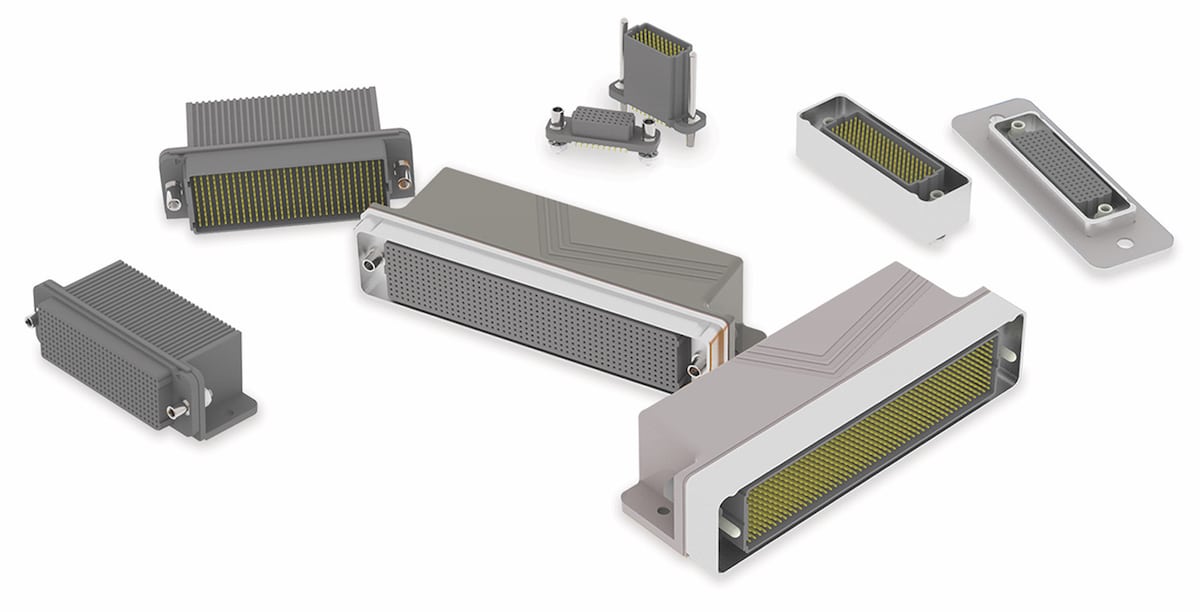
Figure 6: AirBorn’s verSI® Series open-pin-field connectors have sockets with four redundant points of contact for enhanced reliability in mission-critical applications, bolt-down pads for improved robustness and worry-free mating and un-mating, and optional EMI hoods for additional ruggedness and durability, and exceed the requirements of high-speed, 100Ω and 85Ω differential signal integrity applications. Qualified to MIL-DTL-83513, the series also provides enhanced design flexibility with options including: vertical, right-angle, cable I/O, and flex-circuit mounting configurations; 40–500 contacts in 4–10 rows and 10–50 columns; and paste-in-hole, thru-hole, and compliant pin press-fit terminations.
While it may be tempting to specify a commercial-grade connector in a demanding, high-reliability application to help keep costs down, it is best to specify a connector with more rugged, high-reliability attributes, including multiple points of contact, high contact engagement, high contact normal force, and robust base materials with excellent performance characteristics. As microminiature connectors become ever more available, it is also important to source rugged and reliable connectors from trusted, experienced suppliers. Designing critical ruggedness and reliability factors into microscopic connectors is a technological marvel, and these attributes are what separates truly rugged and reliable connectors and connector suppliers from the crowded, commercial-grade pack.
Interested in a specific market? Click a market below for current articles and news.
Automotive, Consumer, Industrial, Medical, Mil/Aero, Datacom/Telecom, and Transportation












